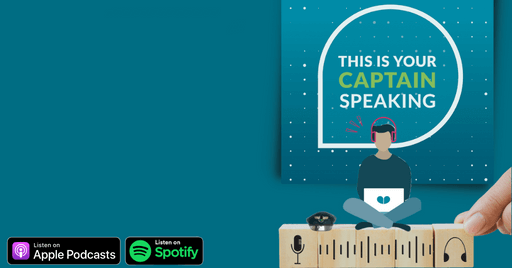How do you distinguish your brand in a sea of competitors clamoring for the same audience’s attention?
The answer lies not just in your products or services, but in the subtle yet powerful elements that make your brand unforgettable.
These are your brand assets – the visual and experiential cues that resonate with your audience and set you apart from the rest. From the color palette that evokes specific emotions to the typography that speaks volumes about your brand personality, each asset plays its role in your branding strategy.
Today, we’ll tell you more about the brand assets that can elevate your branding game to new heights. Get ready to transform the ordinary into the extraordinary and make an indelible mark in your industry.
What are Brand Assets?
Brand assets are the visual, auditory, and experiential elements that represent a company’s identity and help form emotional connections with customers.
Each and every company has brand assets – even if they “produce” the assets unknowingly.
Once you analyze many types of brand assets, you will understand their purpose, potential, how they contribute to your company’s success, resonate with your target audience, and why they encourage people to return.
And this is our goal today.
Types of Brand Assets
So, what brand resources can you use to establish a robust identity for your brand and distinguish your business in the market? Strong brand assets are key to building a cohesive brand image, and we will talk more about them below.
And while there are many types we could list here, we’ll mention a few to help you get started.
Logos
A logo serves as a visual representation of a company’s personality and helps explain the brand’s promise.
It contributes to creating a brand’s visual identity, aids in expressing a brand’s personality, and supports marketing campaigns. A well-designed logo can instantly trigger brand recognition and produce a lasting impression on consumers.
Take, for example, the iconic Apple logo. Its simplicity conveys luxury and sophistication, and contributes to a strong image.

Is it possible to confuse it with anything? We don’t think so.
From packaging to advertising, the consistent use of a company’s logo across various touch points can help you build not only brand awareness or recognition, but also customer loyalty. And that’s the new gold these days.
Brand Guidelines
Brand guidelines provide a framework for maintaining consistency across all brand assets, and ensure a cohesive look.
A style guide is a set of rules and guidelines that guarantee all brand interactions align with the brand identity and are consistent. Also, if it’s well-defined, it is indispensable in preventing misrepresentation and maintaining a uniform aesthetic for each asset. Brand management tools like MARMIND can help streamline and organize brand assets.

You can, for example, upload logos, colors, fonts, and organize graphics, photos, and other assets into folders for easy access by your team.
Typography
Typography is fundamental in brand recognition and communication.
Custom fonts give a professional and readable look, and reflect a brand’s personality and beliefs. Choosing brand fonts judiciously enhances the visual appeal of your marketing assets and ensures they strike a chord with your potential customers.
For instance, a luxury brand might opt for a sophisticated, elegant font, while a tech company might choose a modern, minimalist typeface.
Or, you can be like Coca-Cola with their own one-of-a-kind typography.

Use typography consistently throughout your brand assets – from packaging to social media posts. It will for sure strengthen your identity and make your business easily recognizable to consumers.
Colors Schemes
Color palettes comprise a combination of colors used in design and art to achieve a visually pleasing composition. Selecting the right color scheme, you can express specific emotions and brand values, such as trustworthiness.
For example, a financial institution might choose a conservative color palette of blues and grays to symbolize trust and stability, while a children’s toy company could opt for bright, bold brand colors to evoke fun and playfulness.
For picking the best colors to get along with your brand values, we recommend using a color psychology wheel:

Try to maintain a uniform color scheme, as it helps create a strong visual identity that distinguishes your business from competitors.
Imagery
Images often speak louder than words, so don’t forget to have them.
Imagery, including photos and illustrations, can enhance brand storytelling and provide a memorable visual identity.
It appeals to the senses and helps describe feelings and atmosphere. Utilizing uniform graphics and other design elements in all brand visuals enables swift recognition and establishes lasting impressions among prospects.
For example, a travel agency might use vivid, high-quality pictures of exotic destinations to inspire a sense of wanderlust and adventure in their audience.
Where would YOU go for holidays?

That’s what colours, saturation, contrast, brightness do to images.
Or, a fitness brand could opt for dynamic, action-packed photos to inspire and motivate their customers.
If you carefully choose imagery that aligns with your brand values and intended audience, people will be more likely to engage with such content.
Taglines and Slogans
Taglines and slogans are short, memorable phrases that encapsulate a brand’s core message and inspire an emotional connection with the audience.
The right slogan can help you stand out in a crowded market and make it easy for people to remember and associate with your products or services.
Take, for example, Maybelline’s tagline: “Maybe she’s born with it. Maybe it’s Maybelline.”
https://www.youtube.com/watch?app=desktop&v=T8xWXuNG1RQ
This catchy slogan effectively conveys the brand’s mission of helping people feel confident through enhancing their natural beauty.
Crafting a memorable tagline or slogan that appeals to your clients reinforces your brand’s core message. And helps it be more than memorable to others.
Sound and Jingles
Sound and jingles can create brand recall and prime users to associate a business with quality and a seamless user experience.
Sonic branding involves using catchy tunes to represent your enterprise and to develop a unique sonic identity. Memorable sound effects or jingles can help customers quickly recognize your business and remember its brand.
For example, the Netflix “tudum” sound effect is a powerful sonic brand asset that instantly triggers brand recognition. Netflix took it a step further too – they created a special Tudum site that “goes behind the streams”.

Don’t be afraid to include memorable sounds into your marketing materials and digital platforms. If done correctly, they can leave a lasting impression on your audience and further enhance the identity of your company.
Packaging Design
Packaging design is often the very first impression that retailers or marketers can make on their target audience. That’s why it’s important!
It involves designing attractive and practical containers for products, combining materials, shape, color, images, text, and even legal information for a successful presentation.
For example, Amazon uses its A-to-Z logo on its packaging to remind us that they offer a wide range of products.

As a result, making visually appealing and consistent designs that align with your corporate branding enhances the experience and builds trust.
Website and App Interface
Your product interfaces serve as hubs for digital marketing and help consumers do research before making a purchase. A well-designed website or app interface can provide a consistent experience on all digital platforms, validate your business, and boost loyalty.
For instance, a user-friendly e-commerce website with clear navigation, high-quality photos, and detailed product descriptions can make it easy to purchase your products. Then, your customers, having known how easy it was to finalize their transactions, can come back to your store.
Having these brand assets somehow stored is also important for any potential scalability. If you’d like to build a similar app or simply expand your website, you can then use and repopulate these assets.
Social Media Profiles and Graphics
Social media assets help you with:
- Creating a sense of intimacy and connection with consumers
- Increasing brand loyalty and retention
- Maintaining a consistent social media presence
- Using custom graphics aligned with your brand identity
- Allowing for audience involvement
- Showcasing your brand’s personality
For example, a food brand might share mouthwatering images of their products on Instagram, along with recipe videos and user-generated content.
Meanwhile, a fashion brand could showcase its latest collections through stylized photo shoots and behind-the-scenes footage on TikTok.
Through the use of social media and professionally designed, on-brand graphics, you can make your impact in the online world.
Video Content
Video content can captivate audiences, showcase brand personality, provide valuable information, and make a powerful brand asset. There is a rapid rise in popularity of video content, so you shouldn’t neglect this format.
From informative product demos to entertaining vlogs and testimonial videos, it can help you connect with your target audience and stay in their minds.
For example, a tech company might produce a series of tutorial videos to educate customers on using their products effectively.
That’s exactly what Zoom is doing on their YouTube channel.

Therefore, incorporate high-quality video content into your marketing strategy. It strengthens trust with your audience and highlights your unique personality, among other things…
How to Take Care of Brand Assets
Proper care of your brand assets is fundamental to maintaining brand consistency and securing a cohesive look. It’s not enough to just have assets – you need to have them stored, organized, and in perfect order. Otherwise, once your repository grows, you might quickly lose control over what’s done and what has never been completed.
One effective way to manage your brand assets is to create a comprehensive style guide that outlines the rules and guidelines for using your brand elements, such as logos, typography, and color schemes.
In addition to a style guide, consider using digital asset management solutions to help organize and streamline your digital brand assets and other content.
DAMs can assist in labeling and organizing assets, making it easier for your team to access and maintain consistency across all marketing channels.
And MARMIND can serve as your DAM solution, giving you options to take care of your brand as a whole.

It’s also critical to regularly update and audit your assets to keep them fresh and relevant, aiding in keeping your brand recognizable and in alignment with your prospects’ expectations. What’s fresh today won’t be fresh tomorrow – believe us when we say it!
Key Takeaways
- Brand assets are visual, auditory, and experiential elements that represent a company’s identity.
- These include logos, guidelines, typography, color schemes, imagery, taglines, slogans, sound/jingles, packaging design, and website/app interface.
- Taking care of assets requires creating a style guide and using digital asset management solutions for consistency.
Summary
Brand assets contribute to crafting a strong brand identity and establishing your business as a leader in its industry – that’s for sure. Understanding brand assets and their role in creating emotional connections with customers can help you elevate your strategy and succeed.
They are like jigsaw pieces, each uniquely shaped but essential for completing the overall picture. And the jigsaw is only completed when all the pieces align. So, what are you waiting for?
Frequently Asked Questions
Brand assets are visuals that set a business apart from its competitors, and help build an invisible bond that resonates with customers and leads.
Brand Asset Management (BAM) is an effective way to ensure the consistent use of your company’s brand assets everywhere. It involves organizing and sharing content like logos, graphics, images and videos, as well as setting guidelines for how they should be used. BAM helps maintain a cohesive and compelling look that reflects your company’s values.
Brand assets are important visual elements of your brand identity, such as logos, colors, typography, graphics, images and illustrations, and packaging. They can also include taglines and social media profiles.
An effective brand identity strengthens bonds with customers, differentiates your brand from rivals, and increases satisfaction, resulting in higher loyalty and retention.
Typography is an essential tool for communicating a brand’s identity and values. It allows you to design a professional and memorable look. Custom fonts help increase the recognition of a brand and build its reputation.
Author

Peter Fechter
Peter is Digital Marketing Manager at MARMIND and mainly responsible for website and lead management. When he's not busy creating content, he is developing new strategic approaches for campaign planning.










